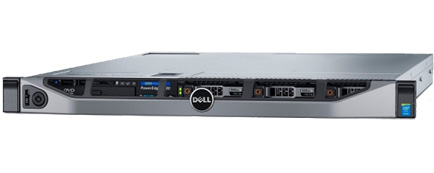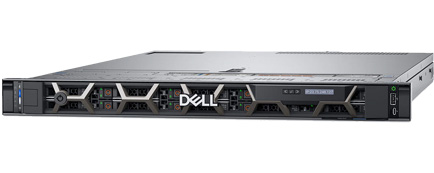Dell PowerEdge R630 vs R640 Server Comparison
Posted by Ryan Brown on Mar 24, 2021
Summary of Server Differences
If you were just to look at the outside of the Dell PowerEdge R630 and R640 servers, you might say these look alike, but that is about the only similarity. The 14th generation Dell servers have definitely pushed the boundaries with what you can stick into a server. The R640 borrows the same 10x2.5” upfront drive selections as the R630, but adds 2 more in the rear of the chassis. That is 12x2.5” total without sacrificing any memory slots – a common technique to fit more into a server. The R640 also gives you an 4x3.5” configuration if you need the larger drives. But, if you are using the larger form factor drives, I would generally recommend going up to one of the 2U servers where you double, triple, or even quadruple the number of drives you get. As far as NVMe capabilities go, the R640 now allows all 10 drives up front to be NVMe where the R630 only allows 4 of them. Both allow for converting a normal 10 bay chassis into an NVMe version if you know the parts to add. For those running Hyper-V, you no longer have to use one or two of your drive bays for the OS. The R640 (and all 14th gen Dell servers) offer optional M.2 boot drives called BOSS (boot optimized storage solution). Hyper-V did too many writes back to disk which made running them from SD cards impractical and not recommended. Beyond the drives themselves, the new H740P RAID card in the R740 gives some extra power with 8GB cache and support for PCI-Express 3.1.
The CPUs are the other big upgrade with the R640 over the R630. Intel’s new line of scalable processors are pretty impressive. Leading CPU benchmarking source, Passmark (https://www.passmark.com/), has the middle of the road CPU for the R630, E5-2660v4, with a similar single thread rating as the lower end R640 CPU, Silver 4214. When you move up on the R640, you really start to outshine the R630. The Gold 6230 has about a 20% increase in single thread rating compared to the E5-2660v4. The max cores for an R630 CPU was 22 cores, but 22 cores is pretty common with Gold CPUs and the top of line Platinum 9282 CPU maxes out at a ridiculous, 56 cores.
All of these upgrades do come at a price, but you make up a little each year with better power efficiency. If you need the power and drive options of the R640, you will not be disappointed. If you don’t need that power, save the money and maybe look at upgrading your network to 25GB. Both servers offer 25GB PCIe cards which can be an inexpensive way to improve performance.

Dell PowerEdge R630
General Server Details:
- CPU(s): 2 x Intel E5 Multi Core
- Memory: 24 DIMM Slots (Max 1.5TB)
- RAID: PERC H330, PERC H730 1GB NV, PERC H730P 2GB NV
- HDD: 2.5" Hot Swap SAS, SATA and Near Line SAS, 1.8" SATA/SAS SSDs
- Riser: 3 PCIe Slots (Half Height) or 2 PCIe Slots (1 Full Height, 1 Half Height)
- Power: 495W or 750W or 1100W Hot Swap Redundant

Dell PowerEdge R640
General Server Details:
- CPU(s): Up to 2 x Intel Xeon SP Multi Core
- Memory: 24 DIMM Slots (Max 3TB)
- RAID: PERC H330, PERC H730P 2GB NV, PERC H740P 8GB NV
- HDD: 3.5" and 2.5" Hot Swap SAS, SATA and Near Line SAS, NVMe SSD
- RISER: 3 PCIe Slots (Half Height) or 2 PCIe Slots (1 Full Height, 1 Half Height)
- Power: 495W, 750W, 1100W, or 1600W Hot Swap Redundant

 xByte's 13th Gen Server Chat
xByte's 13th Gen Server Chat  Bringing the All-Flash Virtual SAN to the SMB
Bringing the All-Flash Virtual SAN to the SMB  Tech Chat: Upgrading Your Server
Tech Chat: Upgrading Your Server